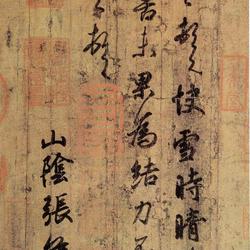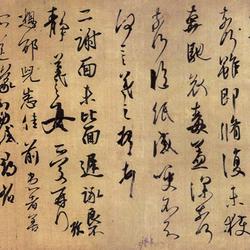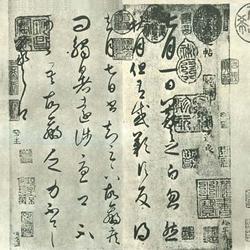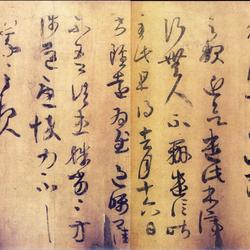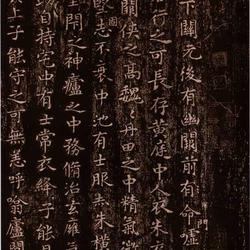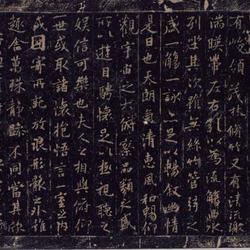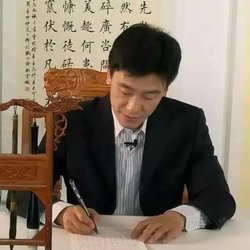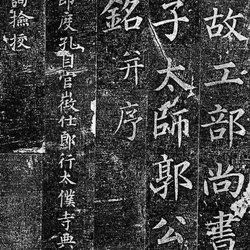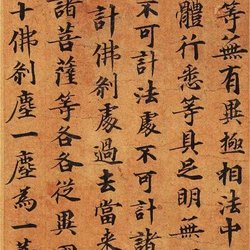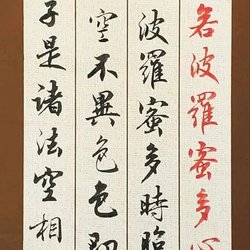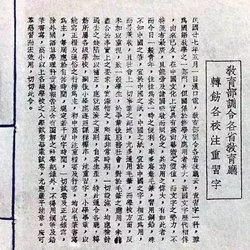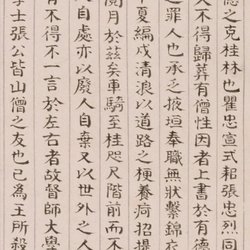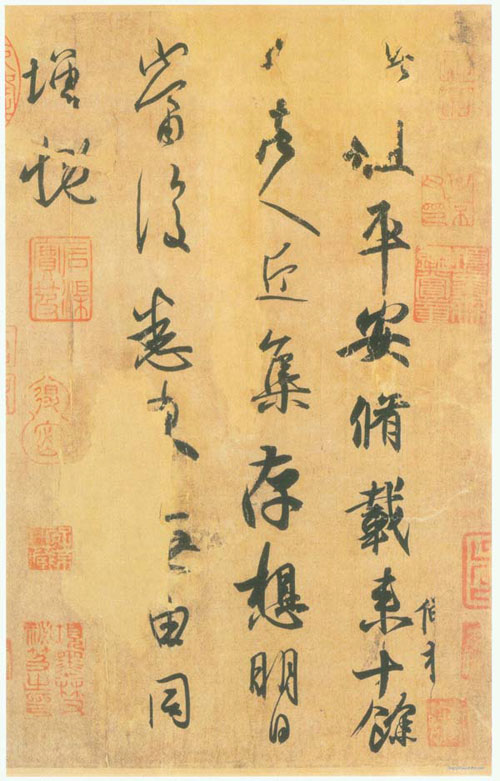
Wang Xizhi's "Peace" post
Explanation: This rough peace repair has been going on for more than ten days. Everyone has gathered here to keep it in mind and think about it tomorrow. There is no reason to add it.
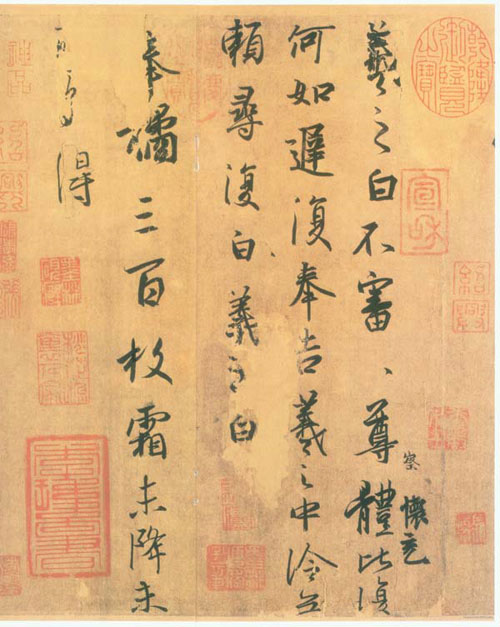
Wang Xizhi's "He Ru" and "Feng Ju" Posts
Explanation: Xi Zhibai does not judge the body and compares it with the complexion. How late is it to tell Xi Zhongcun that he is a rogue? A scoundrel seeks to recover Bai Xi Zhibai. He offers three hundred oranges. The frost has not yet fallen. Not much can be obtained.
The three posts "Ping'an", "He Ru" and "Fengju" are all ruler tablets. A double-hook copy is preserved in the National Palace Museum in Taipei. Across the water in front is an inscription by Emperor Huizong of the Song Dynasty, "Prince Xizhi of the Jin Dynasty presented orange notes". Mi Fu's calligraphy history says, "There is also a calligraphy by Youjun of the Tang Dynasty. It is a double-hook wax imitation. The last call is 'Fengju 300 pieces (the post is made of one piece). The frost has not fallen, so it is rare to get more." "Fengju Tie" was published in the Tang Dynasty. It is very famous. The poet Wei Yingwu said in a poem: "I want to write three hundred poems at the end of the book, and the cave is waiting for the forest to be filled with frost. "The allusion of this calligraphy is used. On March 27, the eighteenth year of the founding of the Emperor (598), Zhuge Ying, a scholar who joined the army, proposed to join the army and Liu Guyan, a scholar who founded the government, wrote Shi Zhiguo at the end."
Since the Southern Dynasty in the sixth century, emperors of all dynasties have been fond of collecting letters from famous writers such as Wang Xizhi. At that time, the scattered writings were framed into hand scrolls of a certain length. Later, they were passed around, cut and reassembled, and their original appearance was no longer restored. This volume of calligraphy is a copy of three pieces of Wang Xizhi's short notes using double hooks and outlines. "Ping'an Tie" is written in both running and cursive scripts. The "Xiuzai" mentioned in the letter is Wang Xizhi's cousin. "He Ru Tie" is written in cursive script to greet the other party and inform them of their current situation. "Feng Ju Tie" is written in cursive script, giving oranges to a friend and attaching this letter.
In these three posts, in addition to appreciating the charm of the entire ruler, you can also carefully examine and compare the beauty of each word. For example, the word "Fu" appears four times in three posts. The "Fu" in "Dangfu" in "Ping'an" is written in cursive script. The three characters "Fu" in "He Ru" are all written in running script. There are many changes, including hooks and turns, sharp and beautiful hair, and some cursive calligraphy techniques for pulling strings, which are also very lively and dexterous. "He Ru Tie" is relatively neat, with three "complex" characters, none of which are similar, have different radicals, or have different twists. They are all vivid and vivid, with precise structure and condensed thoughts. The character "Feng Ju Tie" is large and small, and is full of changes. The character "三" is like a swallow flying across the sky, and the strokes echo each other. The character "hundred" rises at the beginning of the stroke, and then falls diagonally at the end. The stroke turns several times, revealing the razor's edge. , the word "Wei" appears twice, and the writing methods are also different. Other words include "白" and "Feng". There are also different changes. It can be said that you do what you want without going beyond the rules.
The first two posts are briefly found in Chu Suiliang's "Youjun Bibliography". In front of the second post of "How is the peace" are the signatures of "Sengquan" and "Huaichong" of Xu Sengquan and Tang Huaichong, two appraisers of the Xiao and Liang Dynasties. Therefore, the upper limit of the copying of this post may be between the Liang and Sui Dynasties. Unknown. These three inscriptions were collected from the family of Prince Consort Li Wei in the early Northern Song Dynasty. They also have the collection seal of "Li Wei Books". Later he entered the inner palace of Xuanhe. In the inner palace of Shaoxing, it was collected by Xiang Yuanbian and the Zhang family of Jingkou (Zhang Jinchen, Zhang Yucai, Zhang Xiaosi), Da Chongguang and others during the Ming and Qing Dynasties. After entering the imperial court of the Qing Dynasty, he was not taken seriously. The first edition of Shiqu Baoji was listed as inferior, and the "Sanxitang Dharma Notes" was not included. However, the ancient Dharma calligraphy is "Baojin Zhaitie", "Dongshutangtie", "Xihongtangtie", "Mochitangtie", etc., all of which have been copied, but in different orders. Now in the collection of the Palace Museum, it has been included in the "Forbidden City Dharma Book", "The Ink Paintings of Jin Wang Xizhi", "The Complete Collection of Forbidden City Dharma Books of the Past Dynasties", and the fine seal of Erxuanshe. The true scrolls are preserved in the world. (Zhang Guangbin)
Relevant information----------------
Wang Yaoting, "A brief account of Wang Xizhi's postscript on how to be safe in the snow and clear weather, as well as the inscriptions and postscripts on three orange posts - and a reply to Mr. Luo Zangfeng's letter" - "Forbidden City Cultural Relics Monthly", Volume 7, Issue 12 (1990.03), pp. 136-144.
Wang Yumin, "On how peace can be achieved through the "Seal of Ping Haijie Du Envoy" on the Orange Post - Research on Official Seals of the Song Dynasty Part 2" - "Forbidden City Cultural Relics Monthly", Volume 15, Issue 4 (1997.07), pp. 76-83.
Xu Bangda, "Examination of Forgery and Corruption of Ancient Calligraphy and Painting" - (Jiangsu Ancient Books Publishing House, 1984).

